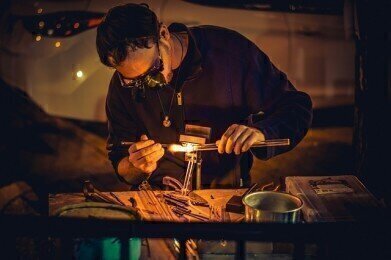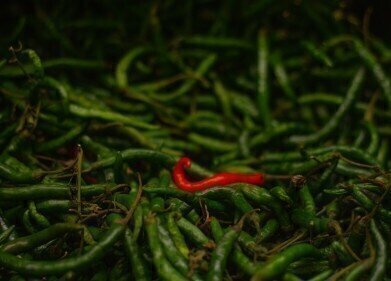Columns (GC)
The Art of Chromatography Equipment
Oct 31 2016
Chromatography plays its part at the cutting edge of analytical techniques — UHPLC, GCxGC, SEC/MALDI-TOF-MS** — are all techniques relying on the separation of a mixture into its components parts. White-coated scientists standing near a big white box that contains all the injectors, columns and detectors that are needed to carry out complex separations that might one day lead to a cure for the common cold. (**SEC/MALDI-TOF-MS is size exclusion chromatography/matrix assisted laser desorption ionisation – time of flight – mass spectrometry — I had to look that one up).
You might be forgiven for thinking that art cannot play much of a role in chromatography — unless you frame the pretty pictures made by your children separating ink spots into their components. But you would be wrong. Art does play a part in chromatography — both as a process and to some people in the aesthetic value of the glass structures used in some chromatographic applications. Welcome to the art of glassblowing.
Glassblowing — art and science
Look around any good chemistry or pharmaceutical laboratory and the glassblower’s art will be on show. Drug discovery and cutting-edge research does not just rely on expensive and complex lab equipment — simple (and complex) glassware is also needed. Volumetric flasks, condensers and glass reactors are all essential components in many laboratories — just as much as the latest high pressure liquid chromatography set-up or advanced data station.
Chromatography also uses many different types of glassware — including large glass chromatography columns for separations and analysis. The use of glass columns is discussed in the article, Isolation and Identification of Green Pigments from Waste Pineapple Peels which looks at how we can clean up food waste before it is dumped in the environment.
Degree in glassblowing?
Scientific glassblowing is an art — an essential art that is practiced by skilled practitioners. A school in the US is trying to keep the tradition of glassblowing alive. The Salem Community College in New Jersey, US offers a degree program in Glass Art and Scientific Glass Technology — America’s only degree program in scientific glassblowing.
Glassblowing is an exacting art form — especially when your creation must have a tolerance of one-thousandth of an inch to enable it to act as a replacement part in a complex array of glassware. Any weaknesses or imperfections in the glassware could lead to accidents — not only ruining experiments but possibly causing serious injury.
Students must learn many different skills to make sure they are competent. They should be able to read blueprints to interpret the researchers needs, and know the basics of organic chemistry so they can understand how their glassware will be used — the pressures, temperatures and chemicals used in organic chemistry and pharmaceutical research.
Skilled glassworkers are in demand — as a look at the British Society of Scientific Glassblowers website will confirm. So, if you like a little art with your science, perhaps glassblowing is a skill to satisfy your needs.
Digital Edition
Chromatography Today - Buyers' Guide 2022
October 2023
In This Edition Modern & Practical Applications - Accelerating ADC Development with Mass Spectrometry - Implementing High-Resolution Ion Mobility into Peptide Mapping Workflows Chromatogr...
View all digital editions
Events
ACS National Meeting - Fall 2024
Aug 18 2024 Denver, CO, USA
Sep 04 2024 Chiba, Tokyo, Japan
Sep 04 2024 University of Warwick, Coventry, UK
Sep 10 2024 Rockville, MD, USA
Plastics Recycling World Expo Europe
Sep 11 2024 Brussels, Belgium














